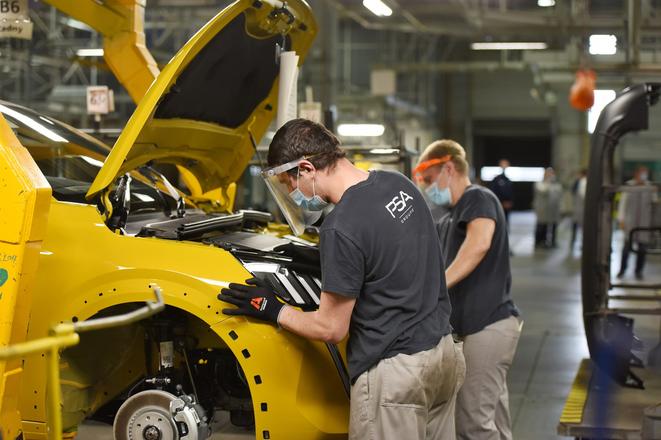New car models, mostly hybrid and electric vehicles, will be added to the portfolio of the Trnava-based carmaker Stellantis Slovakia.
The new production programme of the B segment worth €180 million, which has been the largest since the carmaker came to Slovakia, should be gradually launched in 2023. The preparations are expected to start this summer, but the fundamental part of he transformation is scheduled for 2022, the SITA newswire reported.
The aim of the investment is to contribute to increasing carbon neutrality, which is why a significant portion of the new programme will be comprised of fully electric vehicles. For now, it is premature to discuss specific car brands and models, as the representatives of the carmaker said at a June 28 press conference.The aim of the investment is to contribute to increasing carbon neutrality, which is why a significant portion of the new programme will be comprised of fully electric vehicles. For now, it is premature to discuss specific car brands and models, as the representatives of the carmaker said at a June 28 press conference.
Investment aid will be provided

The planned investment is responding to new trends and will use new technologies, said PM Eduard Heger (OĽaNO). He emphasised that the carmaker has invested €1.2 billion in Slovakia so far, and is expected to manufacture its four-millionth vehicle this year.
He also confirmed earlier information from the Denník E daily that the carmaker would most likely ask for state investment aid, but did not specify any details.
Martin Dzama, head of Stellantis in Slovakia, said that the Trnava plant had to fight for the investment with other branches. The investment, among other things, will secure jobs not only in the factory, but also at its suppliers, as reported by SITA.
Though the carmaker did not want to discuss concrete models, the Denník E reported that the three new models should replace Citroën C3, which has been manufactured in Trnava since 2016. It represents the majority of the plant’s production, with its share amounting to 53 percent of total production last year.


 Stellantis plant in Trnava (source: TASR)
Stellantis plant in Trnava (source: TASR)